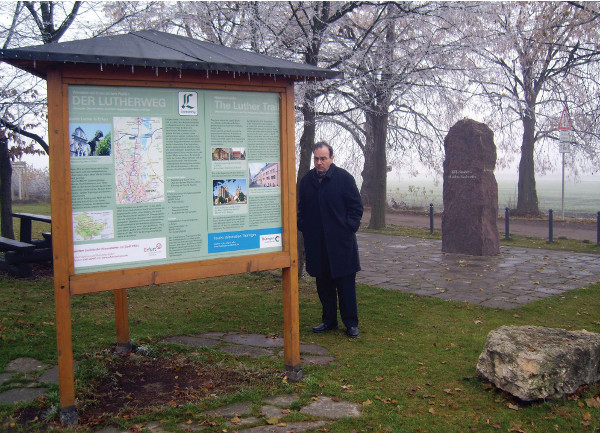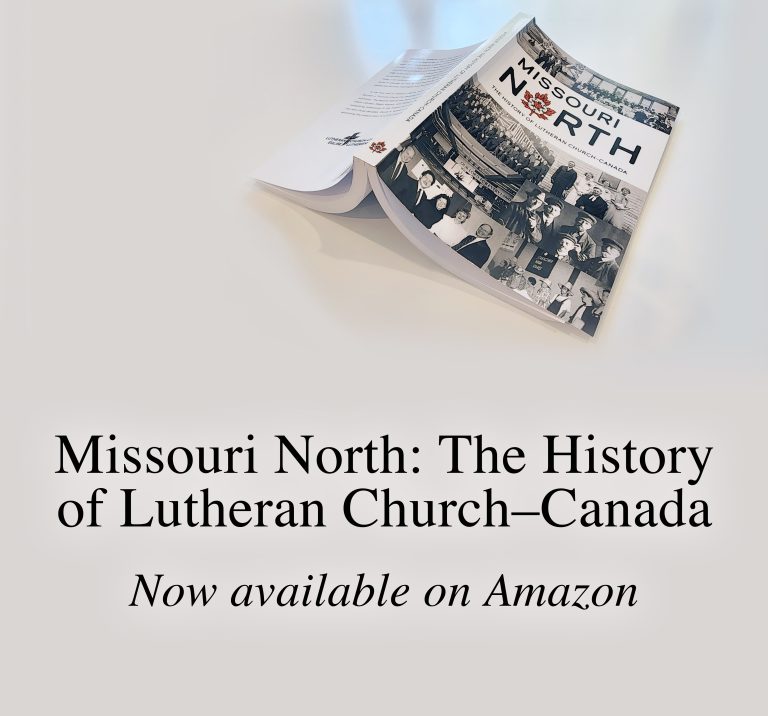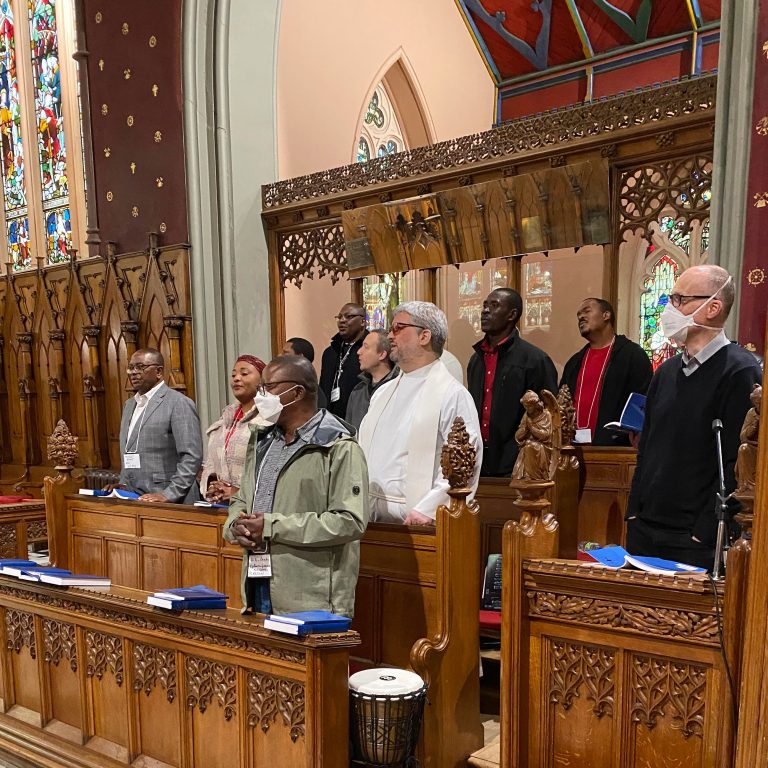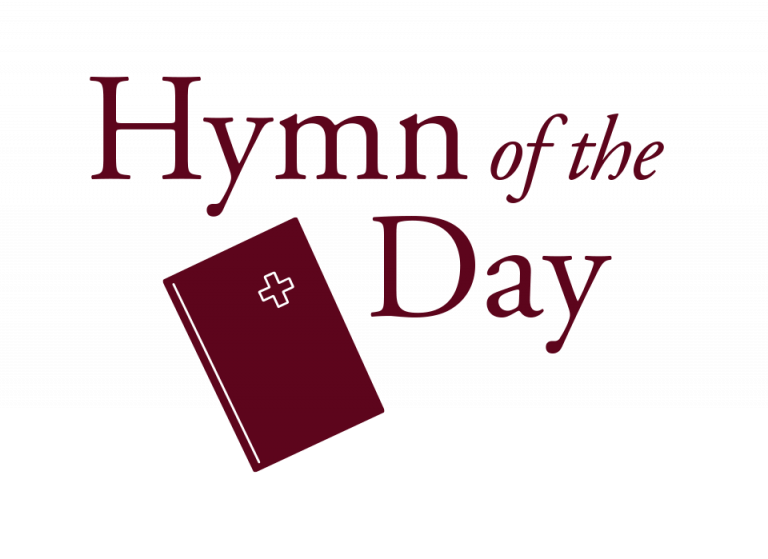A stone along the way, an angel in the sky

President Bugbee in the country near Stotternheim. The stone marking the place Luther “was
shown the way” stands behind him.
by Robert Bugbee
The spot is in open country. It’s near Stotternheim, a village close to the city of Erfurt in former East Germany. A stone marks the place. A few trees surround it, and a sign tells the story to tourists. It’s where young Martin Luther, law student at Erfurt University, walked on a path through farm fields back to school after visiting his parents. On July 2, 1505, a thunderstorm overtook him. Nearly struck by lightning, he cried out a vow that changed his life: “St. Anne, help me! I will become a monk!”
Unlike shallow promises people easily make… and easily break… young Martin took this seriously. Within two weeks he left his law studies and entered the Augustinian cloister of hermits in Erfurt. He renounced the joys of marriage and family, personal freedom and money. His father was horrified. Almost a century ago, when the world was celebrating the 400th anniversary of the Reformation in 1917, a stone monument was placed to mark what researchers seem sure is the fateful spot. The marker explains what happened with these words, “Here, young Luther was shown the way.”
Is that really it? Was it the Lord Who moved him to make this promise and leave his previous life? To be sure, God used Martin’s years as a monk to make something perfectly clear to him: all the praying, fasting and self-denial in the world cannot expel sin from your heart. Obedience and pious conduct won’t erase your bad past. For brother Martin, however, the spiritual failure he felt as a monk accomplished one glorious thing: It cleared the path for Christ to come through; not Jesus Christ, the angry Judge, but Jesus Christ, Who took your place on His cross of suffering and was raised from the dead to open the kingdom of heaven to all believers.
Was God speaking through the lightning bolt near Stotternheim? One can only wonder. Since then I have seen others—and sometimes myself—seem quite sure the Lord was working through some incredible experience to point them this way or that. Yes, there were times when life unfolded in a way that confirmed this idea. Other times it became apparent that we were reading far too much into the odd thing which seemed like clear direction earlier on.
In late December, during the shortest and darkest days of the year in Canada, you and I mark Christmas with hundreds of millions of believers everywhere. We don’t gather around a stone in a field. We don’t focus on a lightning bolt and what it could mean. Instead, we hear the clear voice of an angel, reporting from the night sky over Bethlehem, “I have good news for you. A great joy will come to all the people: The Saviour, who is Christ the Lord, was born for you today in David’s town” (Luke 2:10-11).
We don’t focus on a lightning bolt and what it could mean; we hear the clear voice of an angel, reporting from the night sky over Bethlehem, “The Saviour, who is Christ the Lord, was born for you today in David’s town.”
It’s all there: the Rescuer you need has come as a gift, not because of the good you did, but because God wants you to have Him. He came through a human birth in a real town you can find on the map. This Child, wriggling on the straw, is at the same time the long-promised One having all the authority of God Himself (Matthew 28:18). He has come near so you can embrace Him. He brings life so you may have it. You don’t have to wonder whether this is real, or what it means. The writer of the Christmas story tells you something about his book that really applies to all the Scripture: “it seemed good to me to write an orderly account… so that you may know the certainty of the things you have been taught” (Luke 1:3-4).
I hope you’ll devote time these Christmas days to surround yourself with things you were taught long ago perhaps, but which may have faded and lost their punch in the press of life’s busyness. Read and pray your way through chapters 1-2 of Matthew’s book, chapters 1-2 of Luke’s, chapter 1 of John’s Gospel. Before those readings, read and pray your way through Old Testament passages like Isaiah 9:1-7, Isaiah 11:1-10, Micah 5:1-3, and Jeremiah 23:5-6. Lingering over these words may not be dramatic as a lightning bolt, but God can use them to plant in you a childlike confidence to sing at Christmas:
What brought Thee to the manger,
O Christ-child sweet and dear?
Thy love for me, a stranger—
Oh, be Thou ever near!
O Lord, how great is this Thy love
That reaches down from heav’n above,
Thy love for us, by sin defiled,
That made Thee, God, a child!
(The Lutheran Hymnal 89:3)
——————–
Rev. Dr. Robert Bugbee is President of Lutheran Church–Canada.





